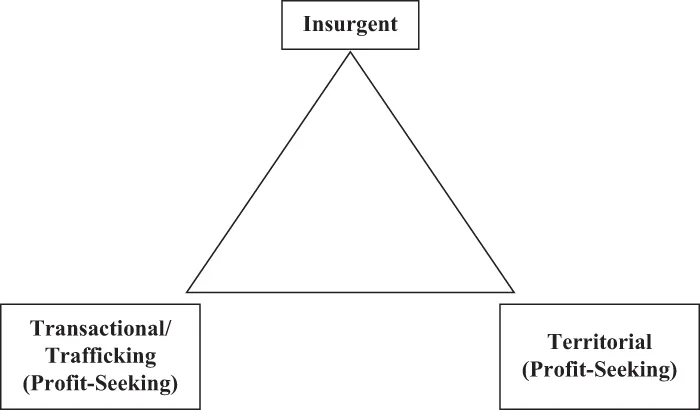1
The State Reaction and Illicit-Network Resilience
ILLICIT NETWORKS INCLUDE INSURGENT networks such as Al Qaeda and the Islamic State in Iraq and Syria (ISIS), Mexican drug networks such as the Arellano Félix Organization (AFO), prison gangs such as the Aryan Brotherhood, and street gangs such as Mara Salvatrucha (MS-13).1 These “dark networks” threaten the security of states by directly challenging state governance and flouting legal norms.2 States have expended great resources attempting to combat these networks, to little avail.3 How do they structure themselves to be resilient? How can they be dismantled? Why do states attack some illicit networks and not others?
An extensive literature identifies dark networks and “netwar actors” as threats to security. In this literature, network structure is identified as critical to understanding why these networks survive. Arquilla and Ronfeldt argue that “flatter,” “headless,” or “hydra-headed structures” will be more likely to survive because these structures are minimally impacted when leadership is removed.4 Illicit networks face incredible threats to their survival and thus operate under highly risky conditions.5 They compete with states that have the ability to arrest or kill leadership figures as a regular feature of business, and they face rival networks that have the ability to gather intelligence against them in the underworld.6
Understanding why states target some illicit networks over others requires an understanding of the state. I concur with Tilly’s argument that “if protection rackets represent organised crime at its smoothest, then war risking and state making—quintessential protection rackets with the advantage of legitimacy—qualify as our largest examples of organised crime.”7 This analogy of the state as organized crime helps us to understand why some drug networks touch the state in such a tender spot.8 It is the state that is meant to provide protection in exchange for taxation. This reality is key to understanding why some drug networks engender the wrath of the state more than others. While Gambetta argues this analogy is “facile” and “must be resisted,” he goes on to say that “in analytical terms the state and mafia do indeed deal in the same commodity.”9 For Gambetta that commodity is protection, and I argue in the same vein as Tilly that for society, the state’s minimal duty is to provide this protection, not just from external threat as Tilly argues but from domestic challengers as well. The problem for Mexico is that by virtue of the nature of the international system it is internationally recognized as a state, giving it international legal sovereignty as Krasner would describe, but due to its weak state capacity and inability to seal borders—due in part to free-trade policies—it lacks a monopoly on force, legitimate or otherwise, in its territory.10
States maintain large potential economic advantages over drug networks but can only marshal those resources when the political will of the state and civil society is “galvanized.”11 Determining precisely when and why the state reaction becomes salient requires an understanding of illicit-network business strategies.
A Typology of Illicit Networks
I posit that there are three ideal types of illicit networks: (1) insurgent, (2) “transactional” or trafficking-oriented, and (3) territorial.12 The first is characterized by insurgency, defined as a political movement attempting to overthrow a state through the unconventional use of force. Terrorist groups such as Al Qaeda that use terrorism as “a logic of action” are included in this type but so are more traditional insurgencies that use terrorism as “a method of action” while retaining their “mass base of support.”13 As Marks argues, the presence of political, religious, and ethnonationalist ideologies are useful characteristics in defining insurgent illicit networks, though ideology alone is insufficient.14
The relative importance of the political ideology must be evaluated in relation to the illicit network’s profit-seeking activities. This can be done qualitatively and on a case-by-case basis, although quantitative metrics would be useful for an evaluation of each illicit network. The relative strength of various cells within the network—assuming it can be defined as a single network with a coherent identity—is also important to the evaluation of illicit networks as insurgent versus profit-seeking. My focus is not on insurgent networks but on profit seekers that make up the base of the triangular continuum shown in figure 1.1.
Note: Author’s figure draws on an interview with an anonymous Mexican government official (2010) and on Reuter, “Systemic Violence in Drug Markets”; MacCoun, Kilmer, and Reuter, Research on Drugs–Crime Linkages; Reiss and Roth, Understanding and Preventing Violence; “Outsmarted by Sinaloa”; and Mazzitelli, “Mexican Cartel Influence.” See Mazzitelli for similar “transportista vs. territorial” concepts.
Explaining why the state reacts to insurgent networks is simple: It is directly challenged and threatened by insurgent violence...

